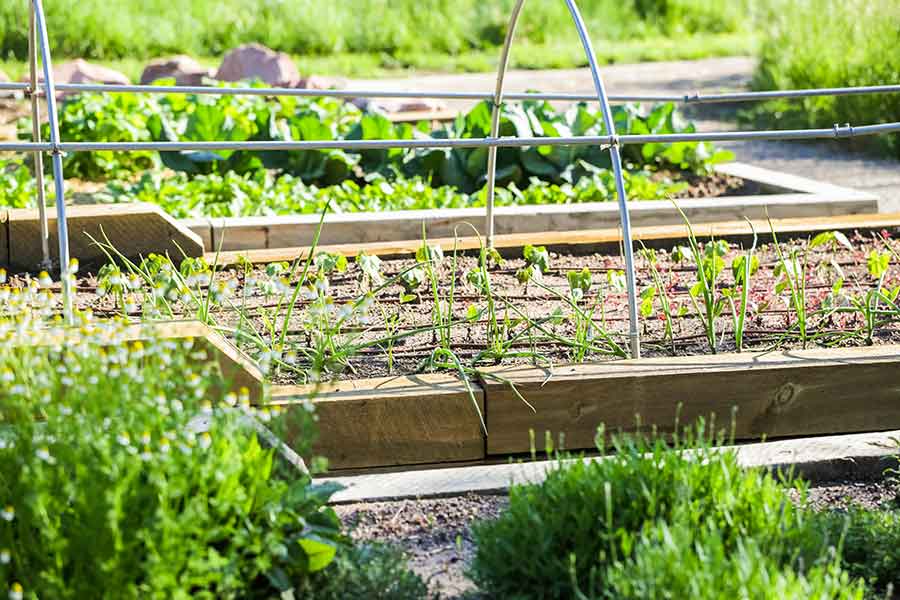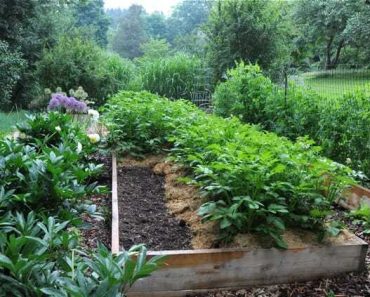Community gardening has sprouted up in urban and suburban areas alike, offering a refreshing breath of nature amidst concrete jungles. These communal green spaces are not just patches of soil; they are vibrant hubs of social interaction, environmental stewardship, and personal growth.

However, like any venture, community gardening comes with its own set of advantages and challenges.
- In this article, we’ll quickly dig into the roots of community gardening to unearth both its pros and cons.
The Pros: Cultivating Benefits Beyond the Soil
1. Social Connection and Community Building
One of the most celebrated benefits of community gardening is the sense of camaraderie it fosters among participants. Shared goals and collaborative efforts bring people together, often leading to lasting friendships and stronger community bonds. In a world where digital interactions often overshadow face-to-face communication, community gardens provide a much-needed space for genuine human connection.
2. Health and Wellness
Engaging in physical activities like planting, weeding, and harvesting can significantly improve physical health. Gardening is a low-impact exercise that helps with flexibility, strength, and cardiovascular health. Moreover, spending time outdoors in natural settings has been linked to reduced stress levels, improved mood, and better mental health overall.
3. Environmental Impact
Community gardens contribute positively to the environment in several ways. They help reduce urban heat islands by providing green spaces that cool the air. Gardens also support biodiversity by offering habitats for various insects, birds, and other wildlife. Additionally, growing local produce reduces the carbon footprint associated with transporting food from distant farms to urban markets.
4. Food Security and Nutrition
Community gardens can be a critical resource for improving food security in urban areas. They provide fresh, organic produce that might otherwise be inaccessible or too expensive for some families. The nutritional benefits of consuming freshly harvested vegetables and fruits are immense, contributing to healthier diets and lifestyles.
5. Educational Opportunities
Gardens serve as living classrooms where people of all ages can learn about botany, ecology, nutrition, and sustainable practices. Schools often collaborate with community gardens to offer hands-on learning experiences for students. This kind of education fosters a deeper appreciation for nature and an understanding of where our food comes from.
6. Economic Benefits
On a broader scale, community gardens can stimulate local economies by creating jobs related to garden maintenance and produce sales. They also increase property values in surrounding areas by enhancing neighborhood aesthetics and reducing crime rates through increased foot traffic and community surveillance.
The Cons: Thorns Among the Roses
1. Initial Setup and Maintenance Costs
Starting a community garden requires an initial investment in land preparation, tools, seeds, compost, and other materials. While grants and donations can alleviate some costs, ongoing maintenance requires regular funding for supplies like water, fertilizers, and pest control solutions.
2. Time Commitment
Gardening is not a one-time activity but a continuous process that demands regular attention. For busy individuals or those with unpredictable schedules, maintaining a plot can become overwhelming. Coordinating schedules among multiple participants to ensure consistent care can also be challenging.
3. Conflicts Among Gardeners
With diverse groups come diverse opinions. Disagreements over garden management practices, plot allocations, or even personal disputes can arise within the community. Effective communication and conflict resolution strategies are essential to maintaining harmony among gardeners.
4. Land Tenure Issues
Securing a permanent location for a community garden can be difficult in areas with high real estate demand. Many gardens operate on leased land or temporary permits subject to renewal or cancellation at any time. The uncertainty of land tenure can deter long-term planning and investment in garden infrastructure.
5. Pest and Disease Management
Managing pests and plant diseases is a common challenge in any gardening endeavor. In a community setting where multiple plots are cultivated closely together, infestations can spread rapidly if not addressed promptly. Organic methods of pest control are preferable but may not always be effective against persistent problems.
6. Inclusivity Concerns
While community gardens aim to be inclusive spaces, barriers such as language differences, physical disabilities, or socio-economic disparities can hinder full participation for some individuals. Ensuring accessibility for all requires thoughtful planning and additional resources.

Finding Balance: Maximizing the Pros While Mitigating the Cons
To reap the full benefits of community gardening while addressing its challenges, consider these strategies:
– Collaborative Planning: Engage all stakeholders in the planning process to ensure diverse perspectives are considered.
– Fundraising Efforts: Seek grants, donations, or partnerships with local businesses to secure funding for initial setup and ongoing maintenance.
– Flexible Participation: Offer flexible membership options to accommodate varying levels of commitment from participants.
– Conflict Resolution Training: Provide training sessions on effective communication and conflict resolution to pre-empt potential disputes.
– Long-Term Agreements: Work with local authorities or landowners to secure long-term leases or land-use agreements.
– Education on Pest Management: Conduct workshops on organic pest control methods to equip gardeners with the knowledge needed to manage infestations sustainably.
– Accessibility Initiatives: Implement measures such as raised beds for wheelchair users or multilingual signage to enhance inclusivity.

Conclusion
Community gardening is more than just cultivating plants; it’s about nurturing relationships, fostering environmental stewardship, enhancing food security, and promoting overall well-being.
While there are certainly challenges to overcome, the rewards far outweigh the drawbacks when approached thoughtfully and collaboratively.
So grab your gloves and trowel — whether you’re a seasoned gardener or a curious beginner — and join the green revolution blooming right in your neighborhood!






























